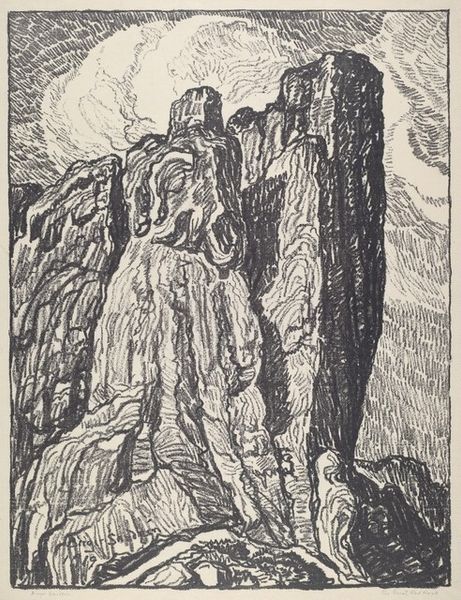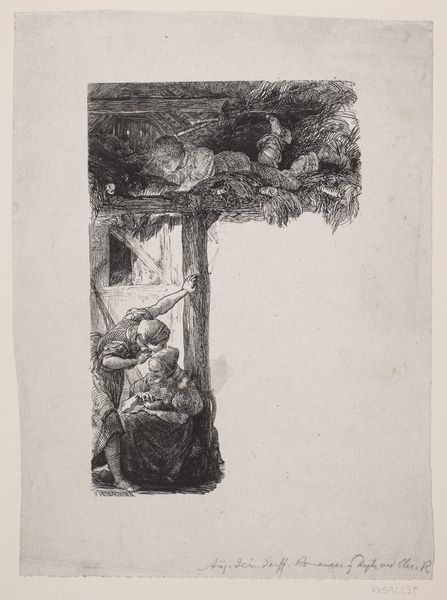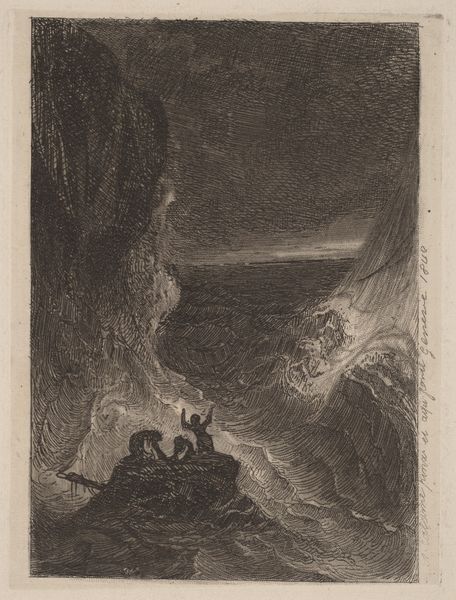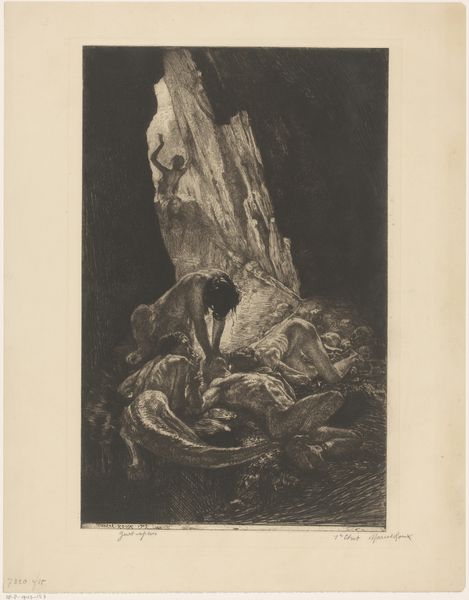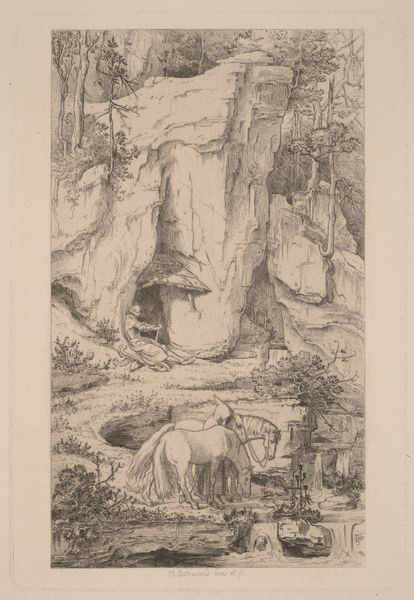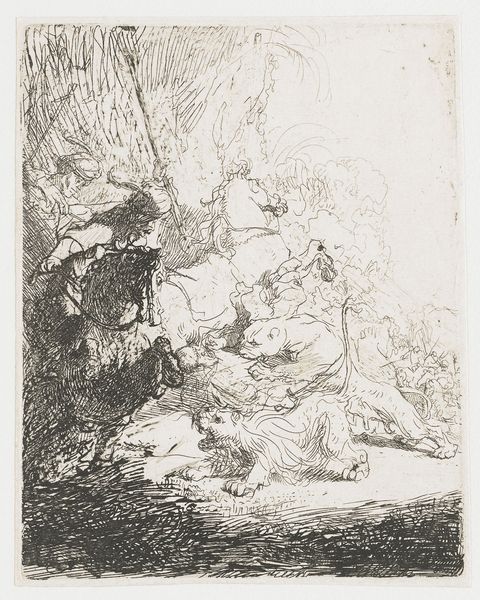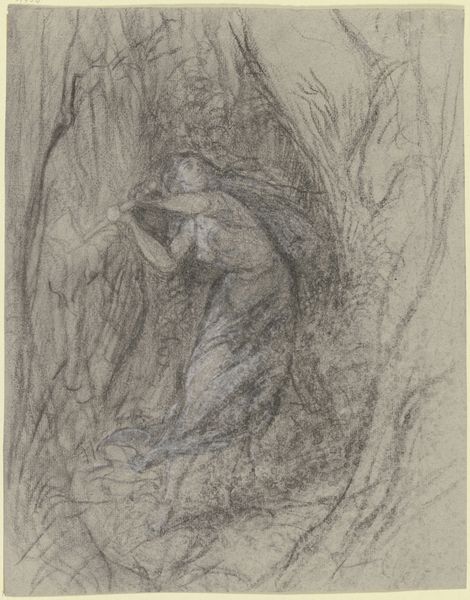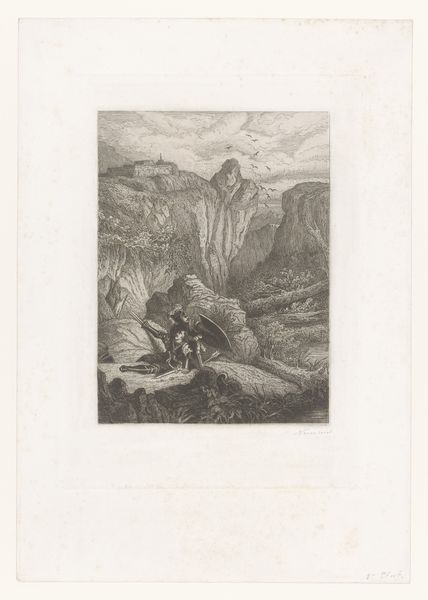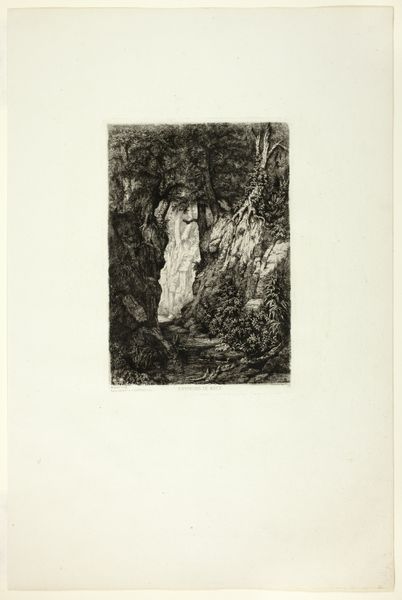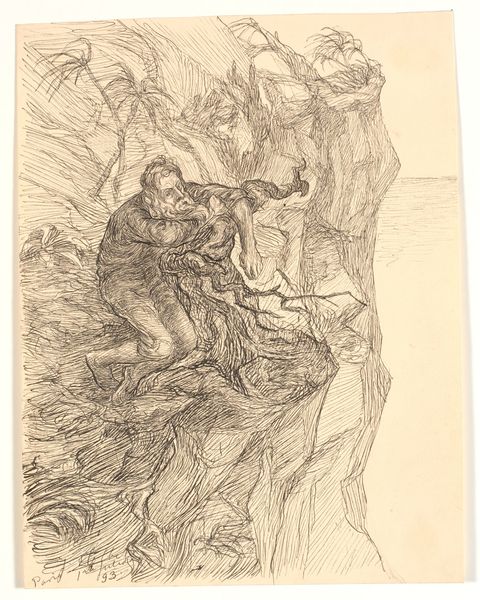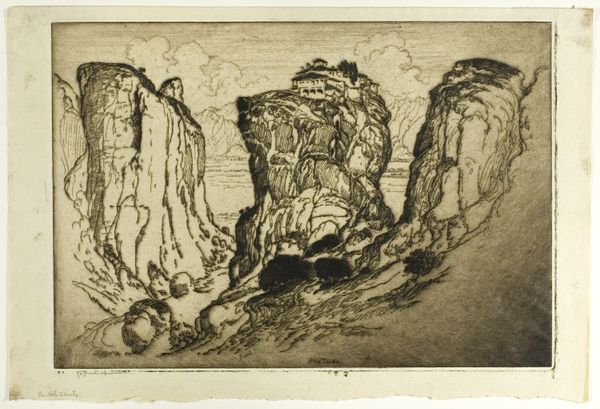
Dimensions: 26.5 x 17.5 cm
Copyright: Public domain
Editor: So, here we have Odilon Redon’s “Woman and the Mountain Landscape,” created in 1865, a pencil and graphite drawing. I'm struck by how this drawing uses such a delicate medium to convey what feels like a powerful, almost gothic, sense of loneliness. What do you see in this piece? Curator: It's interesting that you mention the sense of loneliness, and the gothic feel. It speaks to the evolving role of landscape during the 19th century. Prior to the late 1700's, landscapes in art typically existed as a backdrop for portraits or historical depictions, merely scenery for human events. As we move into the Romantic era, we see a transformation in the relationship between the human subject and nature; here, landscape is elevated and takes on this profound weight of meaning. Editor: In what sense do you mean ‘weight of meaning’? Curator: We see figures dwarfed by the landscape, almost subsumed by it. In that shift, the landscape becomes charged with symbolic importance – a reflection of inner emotional states, a manifestation of the sublime. Redon created this when he was quite young, during a time when there were changing exhibition venues and even challenges to the academy's monopoly on taste. The very act of choosing such a subject in the context of evolving institutions signals an alignment with that emerging Romantic ideal of landscape. Do you agree? Editor: Absolutely! I guess I never considered the rise of landscape art to coincide with the shakeup of artistic institutions. Curator: Precisely. It suggests that the turn toward inner, emotional experience through landscape wasn't just a stylistic preference but deeply embedded in cultural shifts impacting art's purpose and patronage at that time. Editor: That definitely shifts my perspective, makes me wonder about the other factors beyond individual expression. Curator: Indeed. By considering that relationship between artist, artwork, audience, and institutions of power and how this exchange plays out in public discourse helps me unpack these fascinating and powerful meanings and symbolism.
Comments
No comments
Be the first to comment and join the conversation on the ultimate creative platform.
